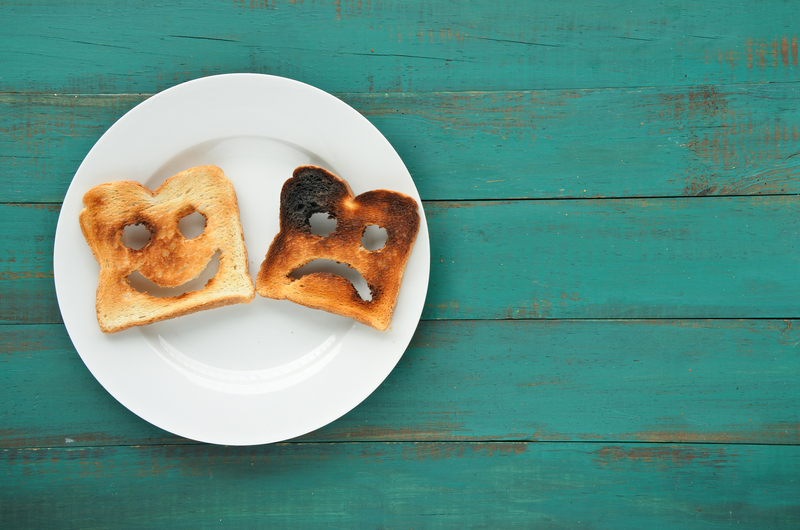Many clients come to me knowing that they have been diagnosed with “Bipolar” but not really knowing what it means. And let’s face it — clinical jargon can be confusing. But in order to participate fully in your own treatment and wellness, it is important to understand your diagnosis (an issue I will discuss in future posts). In this post, I have broken down the types of Bipolar into plain English so that we can examine what they mean.
The DSM-5 (the current manual that defines and lists psychiatric diagnoses) has divided Bipolar disorder into three main types, plus some additional categories mentioned below. These types, in decreasing order of severity, are:
- Bipolar I
- Bipolar II
- Cyclothymic disorder
In order to understand the difference between the types of Bipolar, it helps to understand three types of “mood episode”: depressive, hypomanic, and manic.
Mood episodes: Depressive, Hypomanic, Manic
What do we mean by a “mood episode”? Well, in a “normal” mood state, you have a full range of emotions in response to whatever happens around you. If you see someone you love, you might feel happy. If someone dies, you can feel extremely sad. You don’t get stuck in any of these emotions.
With a mood disorder like Bipolar, you get stuck in what we call mood episodes. In a normal mood state, you might feel what I call “lower-case-d-depressed” in response to a depressing circumstance. You can feel depressed about something, but you don’t get stuck there.
“Capital-D-Depression”: A Full-Body Experience
A depressive episode (what I call “capital-D-Depression”), however, is a completely different beast from feeling depressed about something. It is a full-body experience with changes in sleep, appetite, thinking, and how you feel in your body. You may feel sad or irritable, but you may also feel numb, or nothing at all. Capital-D-Depression doesn’t have to be ABOUT something—an event may trigger it, but not necessarily. A depressive episode in adults lasts, by definition, at least two weeks.
Hypomania: Speedy and Productive
A hypomanic episode is an experience of being more “up” or “speedy” than usual for at least four days. You talk faster, think faster, pretty much do everything faster. Most people enjoy hypomania; some, however, find it more irritating than fun. In hypomania, you often need less sleep, are more social (“the life of the party”), and are more productive. The key factor is that you are still able to function (until the almost inevitable crash).
If you have had at least one lifetime episode of a depression AND one episode of hypomania, you are likely to be diagnosed with Bipolar II. If you have at least one full-blown manic episode (see below), the diagnosis changes to Bipolar I.
“Full-Blown” Mania: Hypomania to the Extreme
A “full-blown” manic episode is hypomania on proverbial steroids, lasting at least one week. It often leads to hospitalization. With mania, there is often extreme impulsivity (giving away large sums of money, major shopping sprees, sex with strangers), little need for sleep, grandiose beliefs (feeling unusually important, talented, or powerful), and sometimes psychosis (seeing or hearing things, for example, or becoming paranoid or having beliefs that don’t match reality). If you have had at least one episode of full-blown mania, even without ever having experienced depression, you are likely to have a Bipolar I diagnosis.
Other Types and Specifiers
The third main type of Bipolar disorder, Cyclothymic disorder, is an episode of on-and-off milder depressive and hypomanic symptoms that don’t meet criteria for full episodes that lasts at least two years in adults.
Within each of these diagnoses, we have what we call “specifiers” (such as “current or most recent episode depressed,” “with mixed features,” “with rapid cycling,” “in partial remission,” “mild,” “with seasonal pattern,” “with psychotic features,” etc.). There are also additional categories for substance-induced disorders, as well as “other” and “unspecified” Bipolar categories, which describe variations on the above criteria.
(For the full DSM-5 listing of criteria for Bipolar and Related Disorders, you can look here. Don’t say I didn’t warn you about clinical jargon! If you are in treatment, you should always feel free to bring any questions to your treatment providers.)
Always an Individual First!
While we might understand symptoms and the usual course of illness based on a diagnosis, as with any psychiatric issue, every person is an individual first. I always remind my clients to use the phrase “I HAVE Bipolar” and not “I AM Bipolar.” Understanding your symptoms and diagnosis is just the beginning. Finding and working with a treatment team who sees and understands you as a person is critical to your ongoing wellness.
This information is not a substitute for therapy. If you are experiencing a clinical emergency, go to your nearest emergency room or call 911. I am available for online psychotherapy for New York State residents. If you are interested in scheduling a free consultation, you can contact me through my page.
For further reading:
- This article by Marcia Purse provides an overview of different classification systems of Bipolar disorder.
- McMan Web, a site run by John McManamy, a journalist and author who has Bipolar, is a hub of information and support.
- bpHope Magazine (also available in paper form) offers “Hope & Harmony for People with Bipolar” and is a great resource.
- DBSA Alliance has support groups for Depression and Bipolar around the country and the world.

